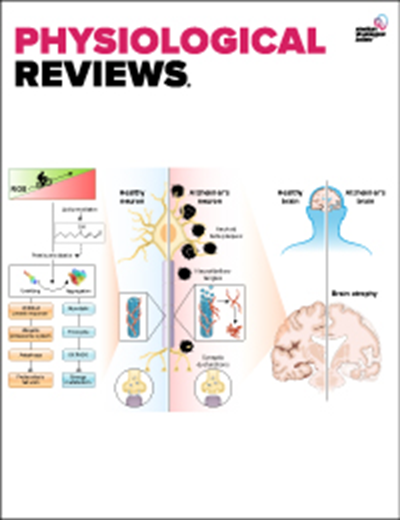Telomere-mediated lung disease
IF 29.9
1区 医学
Q1 PHYSIOLOGY
引用次数: 20
Abstract
Parenchymal lung disease is the fourth leading cause of death in the United States; among the top causes, it continues on the rise. Telomeres and telomerase have historically been linked to cellular processes related to aging and cancer, but surprisingly in the recent decade, genetic discoveries have linked the most apparent manifestations of telomere and telomerase dysfunction in humans to the etiology of lung disease: both idiopathic pulmonary fibrosis and emphysema. The short telomere defect is pervasive in a subset of idiopathic pulmonary fibrosis (IPF) patients, and human IPF is the phenotype most intimately tied to germline defects in telomere maintenance. One-third of families with pulmonary fibrosis carries germline mutations in telomerase or other telomere maintenance genes, and one half of patients with apparently sporadic IPF have short telomere length. Beyond explaining genetic susceptibility, short telomere length uncovers clinically relevant syndromic extrapulmonary disease including a T cell immunodeficiency and a propensity to myeloid malignancies. Recognizing this subset of patients who shares a unifying molecular defect has provided a precision medicine paradigm wherein the telomere-mediated lung disease diagnosis provides more prognostic value than histopathology or multi-disciplinary evaluation. Here, we critically evaluate this progress emphasizing how the genetic findings puts forth a new pathogenesis paradigm of age-related lung disease that links telomere abnormalities to alveolar stem senescence, remodeling and defective gas exchange.端粒介导的肺病
实质性肺病是美国第四大死亡原因;在最主要的原因中,它还在继续上升。端粒和端粒酶在历史上一直与衰老和癌症相关的细胞过程有关,但令人惊讶的是,最近十年,基因发现将人类端粒和端粒酶功能障碍最明显的表现与肺病的病因联系起来:特发性肺纤维化和肺气肿。端粒短缺陷在特发性肺纤维化(IPF)患者中普遍存在,人类IPF是端粒维持中与种系缺陷最密切相关的表型。三分之一的肺纤维化家族携带端粒酶或其他端粒维持基因的种系突变,一半明显散发性IPF患者的端粒长度较短。除了解释遗传易感性外,短端粒长度揭示了临床相关的肺外疾病综合征,包括T细胞免疫缺陷和骨髓恶性肿瘤的倾向。认识到这一具有统一分子缺陷的患者子集提供了一种精确的医学范式,其中端粒介导的肺病诊断比组织病理学或多学科评估提供了更多的预后价值。在这里,我们批判性地评估了这一进展,强调了基因发现如何提出一种新的年龄相关性肺病的发病模式,将端粒异常与肺泡干衰老、重塑和气体交换缺陷联系起来。
本文章由计算机程序翻译,如有差异,请以英文原文为准。
求助全文
约1分钟内获得全文
求助全文
来源期刊

Physiological reviews
医学-生理学
CiteScore
56.50
自引率
0.90%
发文量
53
期刊介绍:
Physiological Reviews is a highly regarded journal that covers timely issues in physiological and biomedical sciences. It is targeted towards physiologists, neuroscientists, cell biologists, biophysicists, and clinicians with a special interest in pathophysiology. The journal has an ISSN of 0031-9333 for print and 1522-1210 for online versions. It has a unique publishing frequency where articles are published individually, but regular quarterly issues are also released in January, April, July, and October. The articles in this journal provide state-of-the-art and comprehensive coverage of various topics. They are valuable for teaching and research purposes as they offer interesting and clearly written updates on important new developments. Physiological Reviews holds a prominent position in the scientific community and consistently ranks as the most impactful journal in the field of physiology.
 求助内容:
求助内容: 应助结果提醒方式:
应助结果提醒方式:


